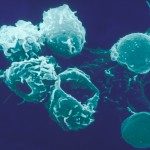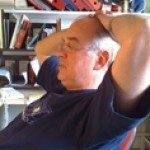Link to Pubmed [PMID] – 15545984
J. Clin. Invest. 2004 Nov;114(10):1372-8
Effective immune responses against pathogens are sometimes accompanied by strong inflammatory reactions. To minimize damage to self, the activation of the immune system also triggers anti-inflammatory circuits. Both inflammatory and anti-inflammatory reactions are normal components of the same immune response, which coordinately fight infections while preventing immune pathology. IL-10 is an important suppressive cytokine, produced by a large number of immune cells in addition to the antigen-driven IL-10-producing regulatory and the naturally occurring suppressor CD4+ T cells, which is a key player in anti-inflammatory immune responses. However, additional mechanisms have evolved to ensure that pathogen eradication is achieved with minimum damage to the host. Here we discuss those mechanisms that operate to regulate effector immune responses.

